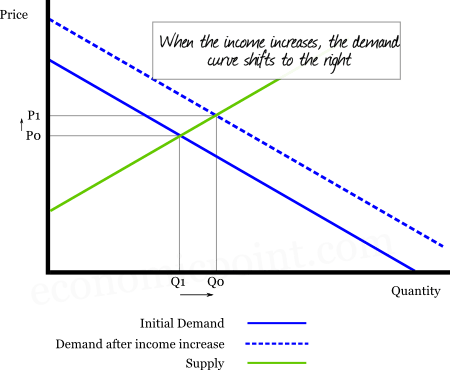The income elasticity of the demand is defined as the proportional change in the quantity demanded, divided the proportional change in the income.
If the consumer income increases, the consumer will be able to purchase a higher quantity of goods and services. The income elasticity of demand measures the responsiveness of the demand with respect to changes in the consumer income.
Income Elasticity of Demand Formula
ei = (ΔQ/Q)/(ΔI/I)
Where:
- ei income elasticity
- ΔQ change in quantity
- ΔI change in income
Income Elasticity of Demand Graph

When the income increases, the demand shifts to the right.
If we see the quantity demanded as a function of the income:

Tipes of Goods according to the Income Elasticity
The demand for some good will be more sensitive to variations in the income. For example: the demand for foods doesn’t variate a lot when the income increases or decreases. The demand for travel or luxury items has a bigger income elasticity.
According to the income elasticity, goods can be classified in:
- Normal Goods: Income elasticity is positive. The mayority of goods are normal.
- Luxury Goods: A normal good will be a luxury good if the income elasticity is bigger than 1.
- Inferior Goods: Income elasticity is negative. Some goods are inferior goods because when the income increases, the consumer prefers to purchase a substitute. For example, if a person uses the bus to go to work, and her income increases a lot, she will buy a car and stop using the bus.
Inferior Good

The same good can have different income elasticities depending on the income level, as we can see in the following chart:

When the income is low, the good is a luxury good. After some level of income, the good is still a normal good, but it is not a luxury good. After a higher income level, the good is an inferior good. As the income keeps increasing, the demand for the good diminishes until it disappears.
It is noteworthy that this pattern can be seen in a lot of modern goods. Also, if we take into account that economic growth is an almost constant phenomena in the long term, this pattern can be translated into a “product life-cycle” pattern.


